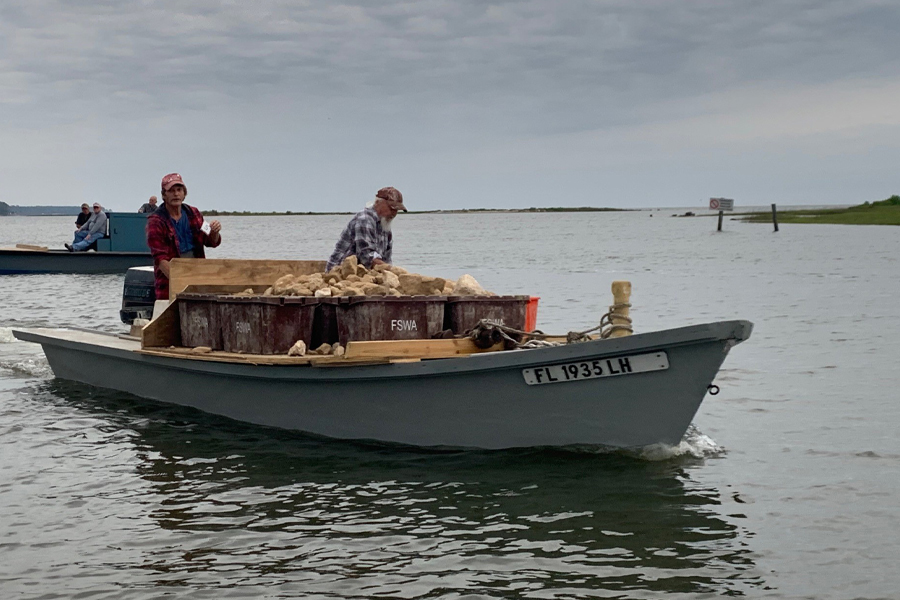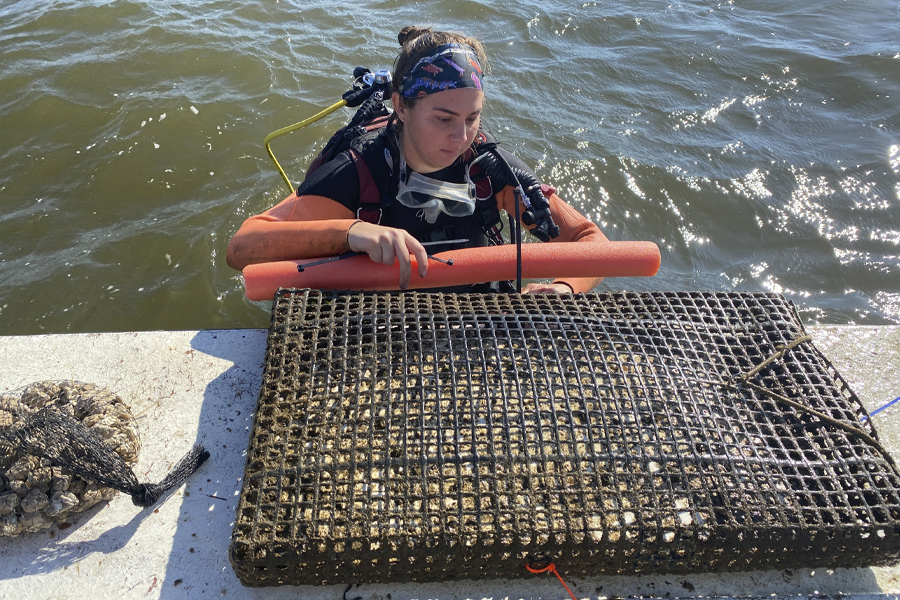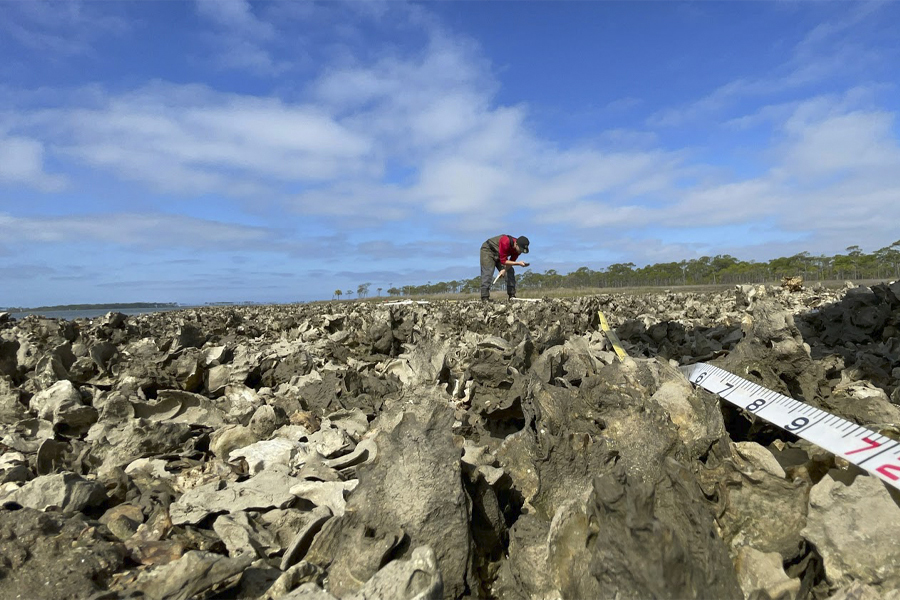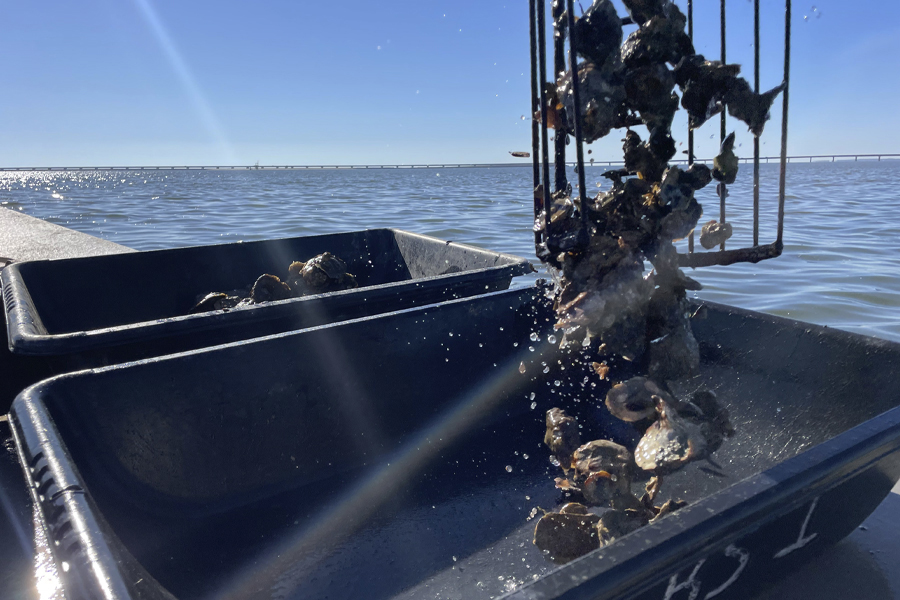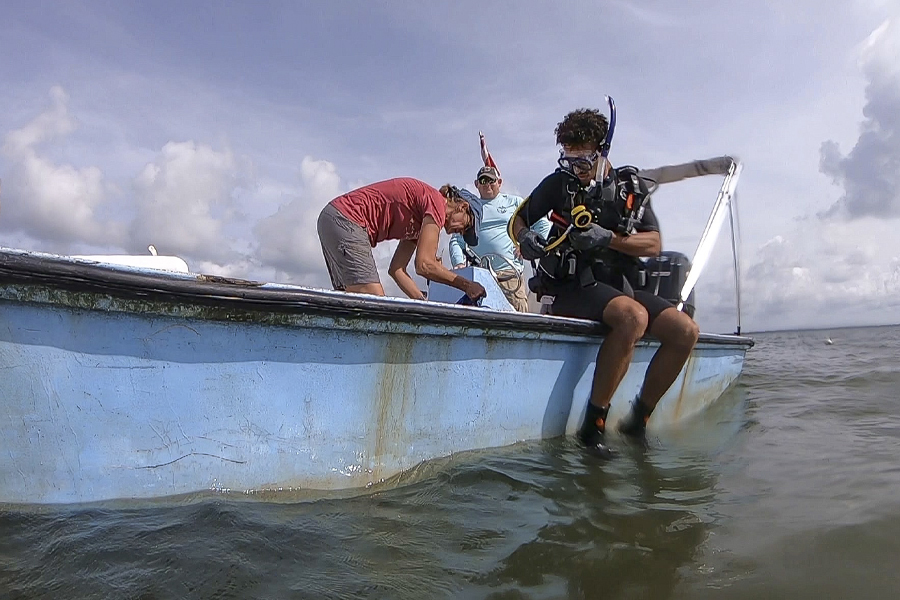
The collapse of the Apalachicola Bay oyster fishery changed a way of life in the Florida Panhandle.
For decades, the bay was renowned for its oyster harvest, an industry that supplied 90% of the oysters in Florida and 10% across the nation. In 2012, those populations collapsed. The National Oceanic and Atmospheric Association issued a disaster declaration the next year, and in 2020, the State of Florida imposed a wild harvest moratorium.
Now, through the work of the Apalachicola Bay System Initiative, or ABSI, there is a plan to help restore one of the country’s great fisheries.
Scientists from Florida State University’s Coastal & Marine Laboratory, or CML, lead ABSI’s work. Research is the foundation of ABSI, but stakeholder engagement is a critical component of the project. The initiative’s Community Advisory Board, or CAB, which includes stakeholders from various groups that rely on the bay, developed a consensus-based restoration and management plan for Apalachicola Bay. Triumph Gulf Coast, an organization established by the Florida Legislature to manage funds from the Deepwater Horizon oil spill settlement, funded the bulk of the work through an $8 million grant. FSU contributed $1.5 million toward the project, with additional support from The Pew Charitable Trusts.
After four years of bi-monthly meetings, in January 2024, the board released the Apalachicola Bay System Ecosystem-Based Adaptive Restoration and Management Plan, which contains a series of recommendations to restore the ecosystem that allowed oysters and the local seafood industry to flourish. The report is now in the hands of state policymakers who can use it to inform future management.
“We hope that this document creates a path for bringing back the Apalachicola Bay ecosystem, including the fishery,” said Sandra Brooke, a CML researcher and ABSI’s principal investigator. “This is a roadmap. If the regulatory agencies take it and continue to interact with the community and continue to listen to the science, there will be a pathway for them to bring back what used to be an incredibly productive and economically and culturally valuable resource.”
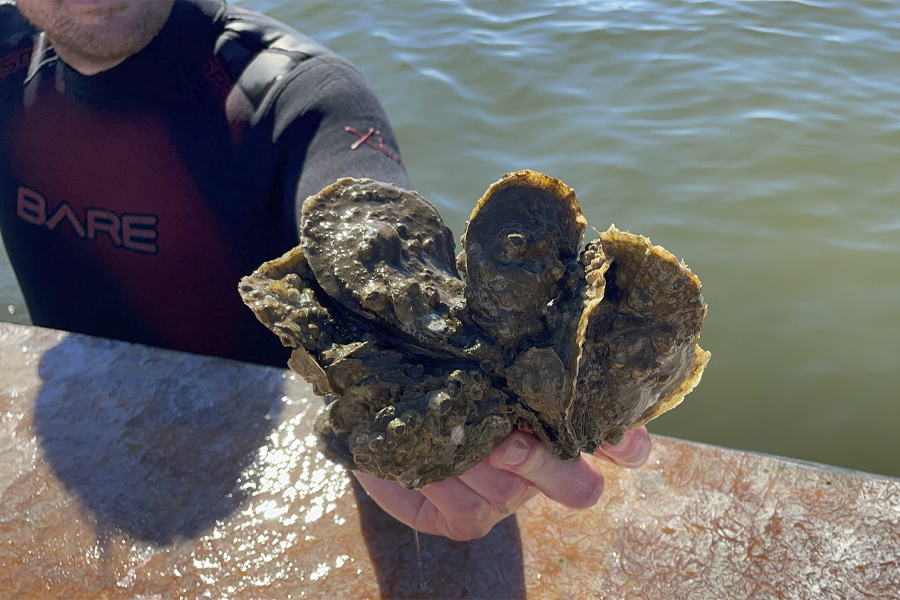
PATH FOR RENEWAL
Oysters had been a major driver of the region’s economy for decades. The loss of the fishery was a major blow to an industry estimated to have been responsible for $134 million in annual economic output before the collapse.
“It seemed like the oysters had always been there, and everybody assumed that the oysters would always be there,” Brooke said. “Unfortunately, things deteriorated to the point where there are no remaining natural oyster reefs in Apalachicola Bay. The habitat condition was that bad. That’s where we started.”
The ABSI Community Advisory Board identified five overarching goals for restoring Apalachicola Bay:
- A healthy and productive bay ecosystem
- Sustainable management of oyster resources
- Management and restoration plan
- Stakeholder and education engagement
- A thriving economy connected to a restored bay
Meeting those goals would mean not just a return of the oyster harvesting industry, but a healthy ecosystem that can sustain the industry over the long-term, provided that resources for reef replenishment are made available and appropriate monitoring and management occurs.
The report also includes various strategies to help reach the goals. One crucial strategy is rebuilding oyster habitat, said Chad Hanson, a science and policy officer with The Pew Charitable Trusts. Oyster larvae are free-floating and must attach to stable material. The shell of a wild oyster that lives and dies in the bay becomes material on which later generations can grow. But if that same oyster is harvested, its shell usually ends up in the trash.
“That’s maybe not that noticeable in the short term, but in the long term when there are other changes, such as salinity going up, temperature going up and removal of habitat — all those things start compounding on each other, and that’s when the declines really start to occur,” Hanson said. “You get to a tipping point.”
Experiments by CML scientists have shown limestone to be a good material for rebuilding reefs. Limestone rocks up to eight inches wide provide a stable base and hiding places to avoid predators. Scientists have observed market-ready oysters appearing after 14 months of growing on these reefs. Another crucial tool is the expansion of shell recycling programs.
“The work that that the ABSI scientists have been doing with their experimental reefs gives real reason for optimism,” said CML Director Joel Trexler. “We are all very optimistic that if federal, state and local communities invest in restoration efforts, they will pay off and we foresee — not as fast as anybody would like — but we don’t see any reason why the reefs can’t be recovered to a level that could sustain an economically viable fishery.”
Other strategies required for successful restoration include consistent monitoring of oyster populations, limiting the harvest based on monitoring, standardizing and improving harvest regulations, enforcement of regulations against illegal harvesting, using farmed oysters to restore wild reefs and more.
“There’s going to have to be a gradual approach to opening the fishery, and it really relies on how well that habitat is being recovered and restored and what its durability looks like over time,” Hanson said. “The real challenge is going to be matching what’s available in the habitat to how we set the fishery management levels appropriately.”
The Community Advisory Board plan tells agencies what ingredients would help to restore the bay’s ecosystem, but it doesn’t prescribe exactly how to implement them or balance competing uses for the ecosystem.
But follow its strategies, and the ecosystem that supported the oyster fishery has the best chance of recovery, Trexler said.
“Our work and work by the state show that over time, this can be recovered as a valuable natural resource,” he said. “It’s going to take an investment and effort, but if that is put into place, it will pay off in the long run.”
A COMMUNITY-CENTERED PLAN
Community input was crucial for developing a plan that represented the various stakeholders in the bay’s future, including the seafood industry, recreational fishing, environmental groups, and local and state government.
Shannon Hartsfield, an oyster harvester from Eastpoint, served on the CAB since its founding. He sees the improving ecosystem as promising but fragile.
“The bay is starting to show life,” he said. “We’re seeing a lot of good stuff out there, but we’re just waiting to see the management side of it now. I really hope the management agencies will take what we’ve worked on and try to figure out how they can use it. When the harvest opens back up, it’s really going to have to be managed well, because it will not take much for it to turn back around the other way.”
Community input will be essential to the long-term success of the restoration and management of the bay, said Anita Grove, a City of Apalachicola commissioner who represented the city on the CAB.
“You must have long-term buy-in from the local community, especially the oyster harvesting community, to ensure success,” she said.
A successor community group, The Partnership for a Resilient Apalachicola Bay, will now take the lead in working with stakeholders and providing input to natural resource management agencies.
Grove was previously the executive director of the Apalachicola Bay Chamber of Commerce. In that role, she saw firsthand the importance of the multi-million seafood industry that was the foundation of the area’s economy. Her hope is that the plan offers a guide to restoration and management of that resource for long-term benefit and a way for the local community to play an active role in the future of the bay.
“It is essentially a blueprint for the future,” she said. “It will have to be adapted over time, but it is a guiding document that will help the restoration and management of the oysters moving forward.”





